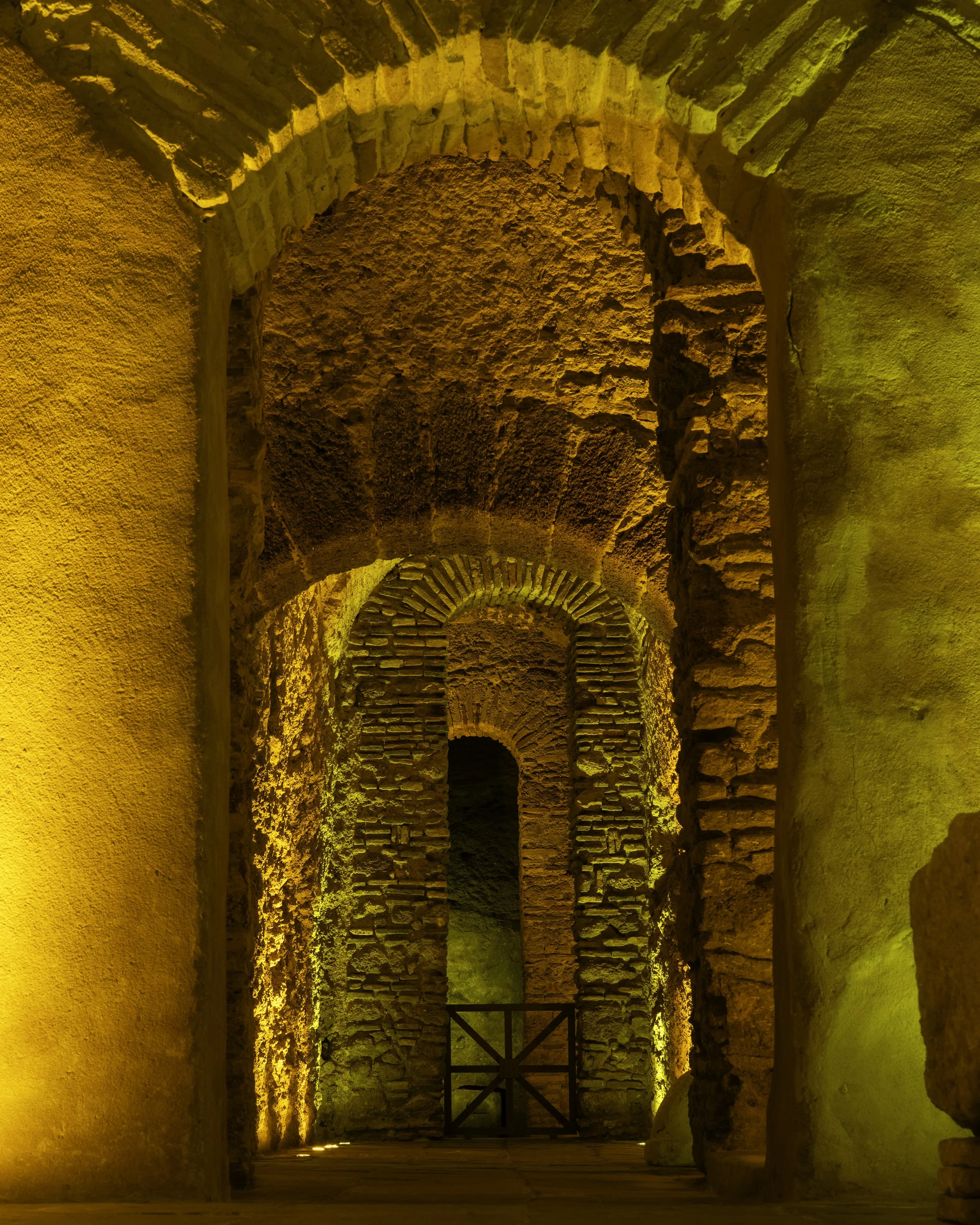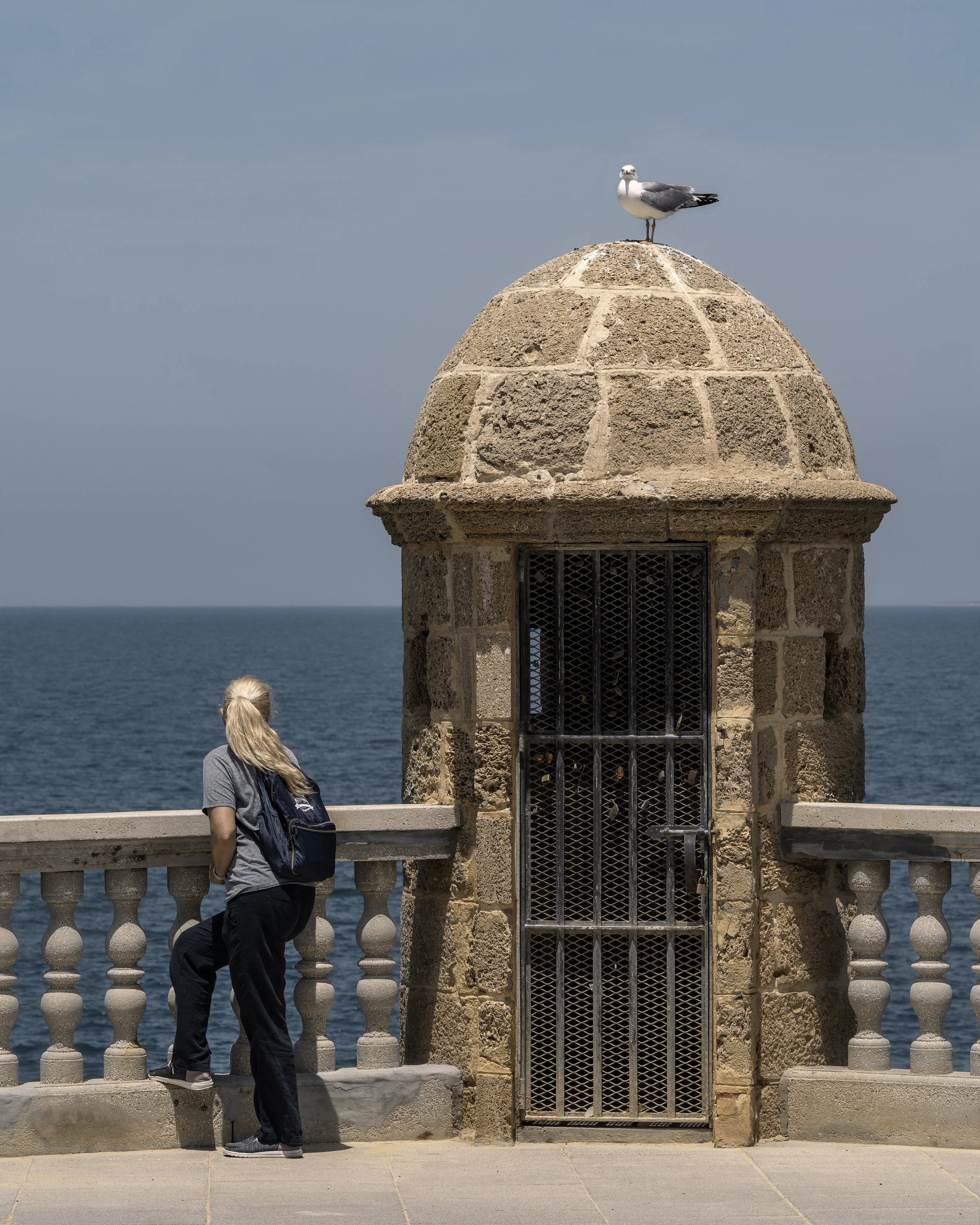Ancient History
The port city of Cádiz is located in the Andalusia region of southwestern Spain. Founded three millennia ago by the Phoenicians as Gadir, it is one of the oldest established cities in the Western world.
Located just northwest of the Strait of Gibraltar, Cádiz became the center of commercial trade sea routes from the 14th-century onward. Significant growth occurred throughout the 16th-century with the city acting as a major hub for exploration and trade by the 18th-century.
Cádiz is currently adorned with 133 watchtowers, including the iconic Torre Tavira, which were traditionally used for observing tall ships. Watchtowers became synonymous with merchant houses during the 18th-century. Four main styles of watchtowers exist including Garita (box), Sillón (armchair), Terraza (terrace), and Mixta (mixed). The Torre Tavira is styled in the terraza fashion and is part of the Marquis of Recaño Palace.
Narrow cobblestone streets and squares lined with Seville orange trees adorn this historic town. It is a most enjoyable place to spend a few days should your travels bring you to this part of the world. The Carnival of Cádiz (Fiestas de Carnival), held each February, is one of the most famous carnivals in the world.
Torre del Sagrario
Places of Interest
Torre Tavira - located in the center of town, the Torre Tavira stands 45 meters above sea level. The first watchman was frigate lieutenant Don Antonio Tavira. Through his telescope, he would see ships full of goods arriving from The Americas. Today, visitors can learn about the first camera obscura installed in Spain and enjoy breathtaking views of Cádiz from the outdoor rooftop terrace. Advance bookings are required with a nominal fee of €8 per person.
Port of Gadir & The Blue Bird Cave - travel underground to observe the original port structures, excavated into natural rock, used by the warships of the Phoenician fleet and later by the Romans. The Port of Gadir served as a place where warships were built and played an essential role during the Second Punic War. Today, visitors can walk through the quay below the buildings above and enjoy this ancient site. Similar to the Torre Tavira, tickets must be purchased in advance.
Catedral de la Santa Cruz de Cádiz & Torre del Reloj (Clock Tower) - the majestic Cádiz Cathedral was built between 1722 and 1838 and became known as the Cathedral of The Americas as construction was primarily funded by the international trade economy. The cathedral features Baroque, rococo, and neoclassical elements. One of the two towers, the Levante Tower, is open to the public. Impressive panoramic views over the city can be enjoyed from this vantage point.
Playa de La Caleta - this popular beach is a great place to enjoy the sunset. The Castillo de Santa Catalina and Castillo de San Sebastián bookend this crescent-shaped swath of sand. Fishing vessels can be seen strewn across the bay bottom at low tide. If a beach day is what you require, this is a very nice location to enjoy the sea. This beach was featured in the James Bond film Die Another Day (2002), standing in for Havana, Cuba.
Gran Teatro Falla - built in the Neo-Mudéjar style, this edifice is a fantastic example of Moorish Revival architecture. Construction began in 1884 and was completed in 1905. Three grand horseshoe arched entry doorways adorn the façade utilizing ablaq voussoirs. The building is further decorated with a multitude of multifoil arched windows and blind arches. If you enjoy Moorish architecture, this theater should be added to your itinerary. It is best viewed from Plaza Fragela.
Port of Gadir - Blue Bird Cave
Hidden Gem
Located along the northern corner of the Plaza de San Antonio, the Neo-Mudéjar interior atrium of the Casino Gaditano historic building is a sight to behold. Originally constructed during the 18th century, the building is currently home to the Restaurante Mimu. Multifoil arches and mullioned windows surround the interior courtyard. Every surface is richly decorated with highly ornate yeserías featuring arabesque forms, muqarnas capitals and vaulting, zellij tilework, and artesonado ceilings. For the architecture enthusiast, the ornamental details of this space will likely leave you in awe.
Watchtowers of Cádiz (Bella Escondida under renovation; Torre Tavira with camera obscura in upper right)
Where to Eat
Like many seaside cities, Cádiz is renowned for fresh locally caught seafood. Known as one of the best tapas cities in Spain, nearly every restaurant will have tapas portions on their menus. For a heartier serving, enjoy a ración (full plate).
A few of our favorite local dishes include the Ostras de Cádiz (Oysters), Tortillitas de Camarones (Shrimp Fritters), Gambas a la Plancha (grilled prawns/shrimp), and Carrillada de Cerdo (pork cheek in wine reduction). Be sure to sample freshly baked empanadas while visiting. A few of our favorite places to dine include:
Casa Hidalgo - this pastry shop is located on Plaza de la Catedral directly across from the main Cádiz Cathedral entrance. This is the perfect place to enjoy a light breakfast before touring the cathedral or the Port of Gadir - Blue Bird Cave. Their Palmera de Yema and Femandin are superb!
La Candela - this is one of the best tapas bars in town. Their dishes include locally sourced ingredients with clean, fresh flavors. We highly recommend the Iberian pork cheeks with smoked cheese foam and quince, the roasted octopus with spicy mashed potatoes, and the home-made croquettes.
Mercado Central de Abastos (Central Market) - one hundred seventy-five vendor stalls exist in this open-air market. Approximately half the vendors sell fresh fruits, vegetables, raw seafood, and meats. The remaining vendors offer cooked options. We enjoyed fried shrimps and dogfish at El Freidor Del Mercado (Stall 1), charcuterie at Sierra de Cádiz (Stall 70), and chicharrónes from Carnicería Curro (Stall 42).
Restaurante Café Royalty - situated on the southwest corner of Plaza de la Candelaria, this ornate establishment is one of the only historically preserved grand cafés in Andalusia. Founded in 1912, it sat vacant for the better part of seven decades following the Spanish Civil War in the late 1930s. Upon being purchased by the de la Serna family in 2008, the space was meticulously and painstakingly renovated to its former glory. Today, patrons can enjoy a delicious meal featuring local ingredients in a most elegant setting.
Freiduría Las Flores - located on the perimeter of the Plaza de las Flores, Freiduría Las Flores is one of the most traditional fried fish and seafood spots in town. Dinging al fresco amongst the local flower vendors makes for a colorful and enjoyable atmosphere. If unsure what to order, the Surtido “Frito Gaditano” is sure to provide an enjoyable sampler platter.
Taberna La Manzanilla - this authentic Spanish sherry bar has been passed down through three generations. Although Cádiz lies just outside of the Sherry Triangle borders, this family-owned establishment is a fantastic place to sample these high-quality fortified wines in a charming setting. The owners are happy to regale visitors with stories about the region and local history.
Parque Genovés
Conclusion
Cádiz is a picturesque seaside destination. The fresh seafood, watchtowers, colonial streets lined with orange trees, charming squares, and beaches are all reasons to visit this historic Spanish city. If you plan on spending time traveling throughout the Andalusia region, a few days in Cádiz should be added to your itinerary. Your experience here will be relaxing and most enjoyable.
Garita de Santa Bárbara
Travel Partner
For all of our adventures, we partner with Landmark Travel, a division of Preferred Travel & Company. To begin planning your travel to any of these unique destinations, contact Klara Collura:
Email: klari@landmark-travel.com
Phone: (954) 523-0727
Catedral de Cádiz & Levante Tower






